- Understanding Winter Cuttings
- Advantages of Winter Cuttings
- Steps to Take Winter Cuttings
- Benefits of Winter Cuttings
- Choosing the Right Plants
- Preparing for Winter Cuttings
- The Role of Hard Frost
- Rooting Techniques after a Hard Frost
- 1. Protect cuttings from harsh weather conditions
- 2. Apply a rooting hormone
- 3. Use a well-draining rooting medium
- 4. Maintain proper moisture levels
- 5. Provide bottom heat
- 6. Monitor and adjust lighting conditions
- 7. Patience and monitoring
- Caring for Rooted Cuttings
- 1. Transplanting
- 2. Watering
- 3. Light and Temperature
- 4. Fertilizing
- 5. Protection
- Question-answer:
- Can I take winter cuttings of deciduous plants after a hard frost?
- What is the best time to take winter cuttings of deciduous plants?
- What types of deciduous plants can be propagated from winter cuttings?
- What is the process for taking winter cuttings of deciduous plants?
- Can I use a heating mat to encourage root growth in my winter cuttings of deciduous plants?
- How long does it take for winter cuttings of deciduous plants to root?
- What should I do if my winter cuttings of deciduous plants are not rooting?
- Video: Fall and Winter Cuttings: Cool Season Plant Propagation
Winter is often seen as a time when plant growth slows down or even comes to a halt. However, experienced gardeners know that this season can also provide unique opportunities for plant propagation. One technique that is particularly successful during the winter months is taking cuttings of deciduous plants and rooting them after a hard frost.
Deciduous plants are those that lose their leaves in the winter, such as shrubs, trees, and some perennials. While many people think of propagating plants by taking cuttings in the spring or summer, winter cuttings can be just as successful, if not more so. The key is to take the cuttings after a hard frost has occurred, which triggers a natural process within the plant to go into a dormant state.
When a plant goes into dormancy, its growth slows down and its energy is focused on survival rather than reproduction. This makes it an ideal time to take cuttings, as the plant is not actively growing and is less likely to suffer from transplant shock. Additionally, the hard frost helps to stimulate root growth, making it easier for the cuttings to establish themselves and develop a strong root system.
It is important to choose the right species and varieties for winter cuttings. Hardy plants that are adapted to colder climates are more likely to be successful. Examples include roses, hydrangeas, lilacs, and many types of fruit trees. It is also important to take cuttings from healthy plants that are free from disease or pest problems.
Once the cuttings have been taken, they can be rooted in a variety of ways. One common method is to place the cuttings in a container filled with a well-draining rooting medium, such as sand, perlite, or vermiculite. The container should then be placed in a cool location, such as a garage or unheated greenhouse, where the temperature can remain consistently cool but above freezing. This will allow the cuttings to slowly root without being subjected to extreme temperatures.
With proper care and attention, winter cuttings of deciduous plants have a high success rate. By taking advantage of the natural processes occurring within the plant during the winter months, gardeners can propagate their favorite plants and expand their gardens, even when the weather is cold and snowy.
Understanding Winter Cuttings
Winter cuttings are a method of propagating deciduous plants during the dormant season. This technique involves taking cuttings from a parent plant and encouraging them to form roots in a controlled environment. Winter cuttings are typically taken in late fall or early winter, after the plant has gone dormant.
Advantages of Winter Cuttings
- Increased success rate: Many deciduous plants root more easily from cuttings taken during the winter months.
- Availability of plant material: Winter is a convenient time to take cuttings, as the plants are not actively growing and can be easily accessed.
- Year-round propagation: By taking winter cuttings, gardeners can propagate plants throughout the year, regardless of the growing season.
Steps to Take Winter Cuttings
- Selecting plant material: Choose healthy, disease-free branches for your cuttings. Make sure the branches are woody and have a diameter of about ¼ to ½ inch (0.6 to 1.3 cm).
- Preparing the cuttings: Use a sharp, clean pruner to make a clean, angled cut just below a bud or node. Remove any leaves or buds from the lower half of the cutting.
- Applying rooting hormone: Dip the bottom end of each cutting into a rooting hormone powder or gel to increase the chances of rooting.
- Planting the cuttings: Insert the cuttings into a well-draining rooting medium, such as a mix of peat moss and perlite. Make sure to space the cuttings apart to allow for air circulation.
- Providing appropriate conditions: Place the cuttings in a protected environment that provides humidity and warmth. A greenhouse or cold frame can be ideal for rooting winter cuttings.
- Maintaining moisture: Keep the rooting medium consistently moist, but not overly wet. This will provide the necessary moisture for root development.
- Monitoring the cuttings: Check on the cuttings regularly and watch for signs of rooting, such as new growth or resistance when gently tugged.
- Transplanting the rooted cuttings: Once the cuttings have developed a healthy root system, they can be transplanted into larger containers or directly into the garden.
By understanding the process of taking winter cuttings and providing the proper care, gardeners can successfully propagate their favorite deciduous plants during the dormant season. This can be a rewarding way to expand the garden and create new plants for future enjoyment.
Benefits of Winter Cuttings
- Extended Root Development: Winter cuttings allow for longer root development compared to cuttings taken in other seasons. As the plants are dormant during winter, they can focus their energy on root growth, leading to strong root systems.
- Increased Success Rate: The cold temperatures during winter help to suppress fungal and bacterial diseases that can affect the rooting process. This reduces the risk of infections and improves the chances of successful rooting.
- Availability of Plant Material: Winter cuttings provide a way to propagate plants during a time when other propagation methods may not be feasible. This allows for the production of new plants even in unfavorable conditions.
- Cost-Efficient Propagation: Winter cuttings can be a cost-effective way to propagate plants compared to other methods, such as purchasing new plants or using expensive growth hormones. It allows for the production of multiple plants from a single parent plant.
- Preservation of Genetic Traits: Winter cuttings help to preserve the genetic traits of the parent plant, ensuring that the new plants will have similar characteristics. This is especially important for rare or unique plant varieties.
Choosing the Right Plants
When it comes to taking winter cuttings of deciduous plants, it’s important to choose the right plants to ensure successful rooting even after a hard frost. Here are some factors to consider when selecting plants for winter cuttings:
- Hardiness: Choose plants that are hardy and resilient enough to withstand the cold winter temperatures. Look for plants that are suitable for your specific climate zone.
- Health: Select plants that are healthy and free from any diseases or pests. Avoid choosing plants with weakened or damaged stems as they may have a lower chance of rooting successfully.
- Growth Characteristics: Consider the growth characteristics of the plant. Look for plants with vigorous growth as they are more likely to root successfully.
- Compatibility: When taking cuttings for propagation, it’s important to choose plants that are compatible with your rooting method. Some plants may root better in soil, while others may require a more specialized rooting medium.
By carefully considering these factors, you can increase the chances of successful rooting when taking winter cuttings of deciduous plants. Remember to always follow best practices for taking cuttings and provide proper care and conditions for the cuttings to root and grow into healthy plants.
Preparing for Winter Cuttings
- Selecting Plants: Choose deciduous plants that are suitable for propagation by winter cuttings. Look for healthy, disease-free plants with strong growth.
- Timing: Plan to take winter cuttings after a hard frost but before the ground freezes. This is usually in late autumn or early winter, depending on your region.
- Tools and Materials: Gather all the necessary tools and materials, including sharp pruning shears, rooting hormone, sterile propagation medium, clean pots or trays, and clear plastic bags or covers for creating a humid environment.
- Preparing the Cuttings: Take cuttings from the current year’s growth, selecting branches that are about pencil thickness. Cut each stem at a 45-degree angle, just below a node, and remove any leaves or buds from the bottom half of the cutting.
- Treating the Cuttings: Dip the cut end of each cutting into rooting hormone to promote root development. Shake off any excess hormone before planting the cutting in the propagation medium.
- Planting the Cuttings: Make a hole in the propagation medium for each cutting and gently insert the cut end, ensuring that at least one-third of the cutting is below the surface. Space the cuttings out in the pots or trays to allow air circulation.
- Covering and Care: Place a clear plastic bag or cover over the pots or trays to create a humid environment. Keep the cuttings in a cool but frost-free location and mist them regularly to maintain moisture. Avoid overwatering, as excessive moisture can lead to rot.
- Monitoring and Transplanting: Check the cuttings regularly for signs of rooting, such as new growth or resistance when gently tugged. Once the cuttings have rooted, they can be transplanted into individual pots or into the garden in early spring.
The Role of Hard Frost
Frost plays an important role in the process of rooting winter cuttings of deciduous plants. A hard frost, which refers to a period of extremely cold weather, can actually help facilitate the rooting process.
During a hard frost, the cold temperatures cause the cells in the plant’s stem to freeze. This freezing action can actually help to break down the cell walls and make it easier for the roots to emerge. The freezing temperature also helps to kill any potential pathogens or diseases that may be present on the cutting, reducing the risk of infection.
After the frost, the thawing action allows the moisture within the cells to expand, creating small cracks and openings in the stem. These openings provide a pathway for water and nutrients to reach the developing roots, helping to nourish the cutting and promote root growth.
Additionally, the cold temperatures during a hard frost can trigger changes in the plant’s hormonal balance. This hormonal shift can stimulate the production of auxins, which are plant hormones that promote root development. As a result, the freezing temperatures can actually enhance the rooting process and improve the chances of success when propagating winter cuttings.
Rooting Techniques after a Hard Frost
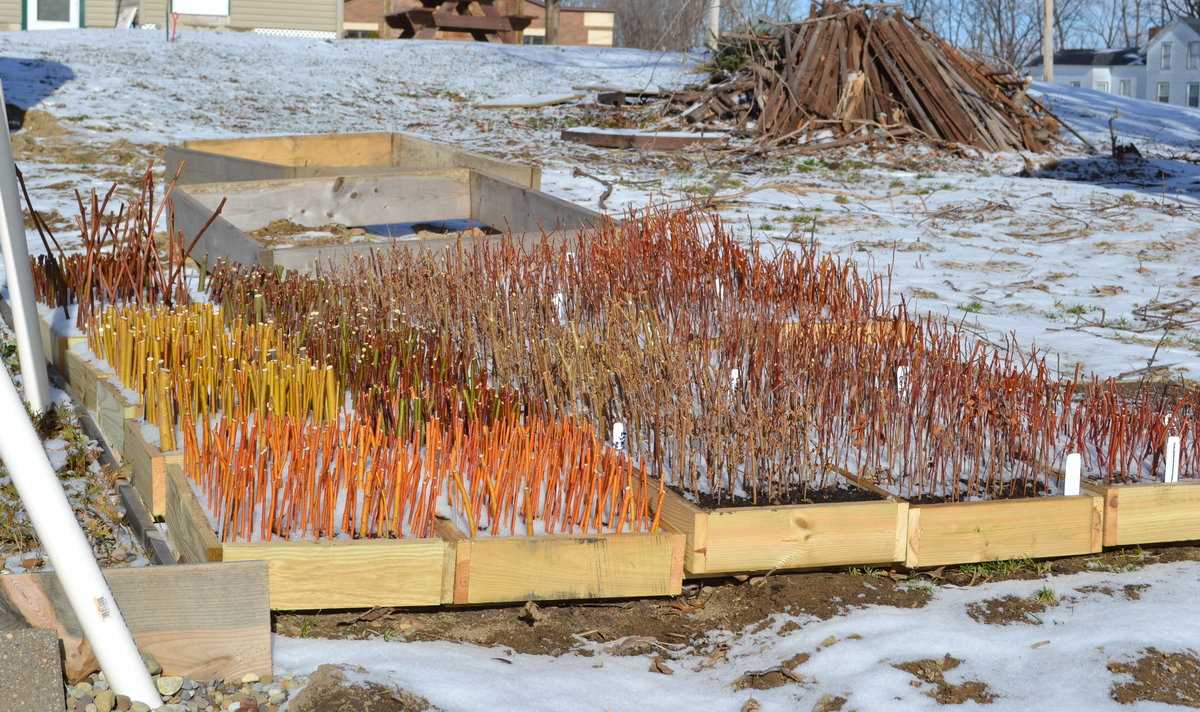
When attempting to root cuttings of deciduous plants during the winter, it can be challenging to achieve successful results, especially after a hard frost. However, with the right techniques and care, it is still possible to propagate plants even under such conditions.
1. Protect cuttings from harsh weather conditions
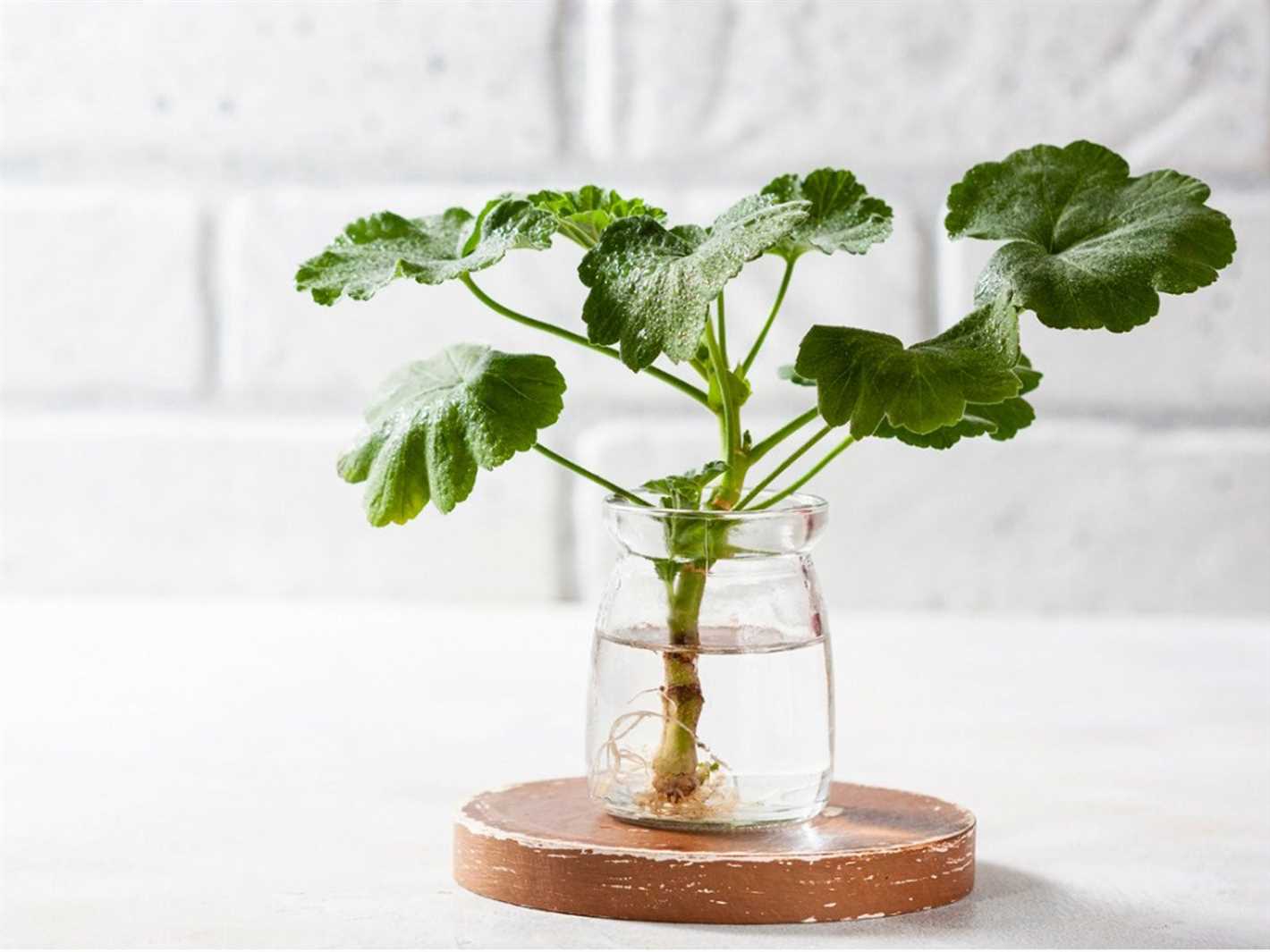
After taking the cuttings, it is essential to protect them from extreme cold temperatures. One way to do this is by placing the cuttings in a cold frame or a greenhouse. These structures provide some insulation and protection from harsh weather conditions, helping the cuttings withstand the effects of a hard frost.
2. Apply a rooting hormone
Using a rooting hormone can greatly enhance the chances of successful rooting, especially in difficult conditions. The hormone stimulates root growth and increases the chances of survival for the cuttings. Apply the rooting hormone to the cut ends of the stems before planting them in the rooting medium.
3. Use a well-draining rooting medium
A well-draining rooting medium is crucial for rooting cuttings after a hard frost. It prevents excess moisture around the cuttings, which can lead to rotting. A mixture of perlite, vermiculite, and peat moss can provide a suitable rooting medium for the cuttings.
4. Maintain proper moisture levels
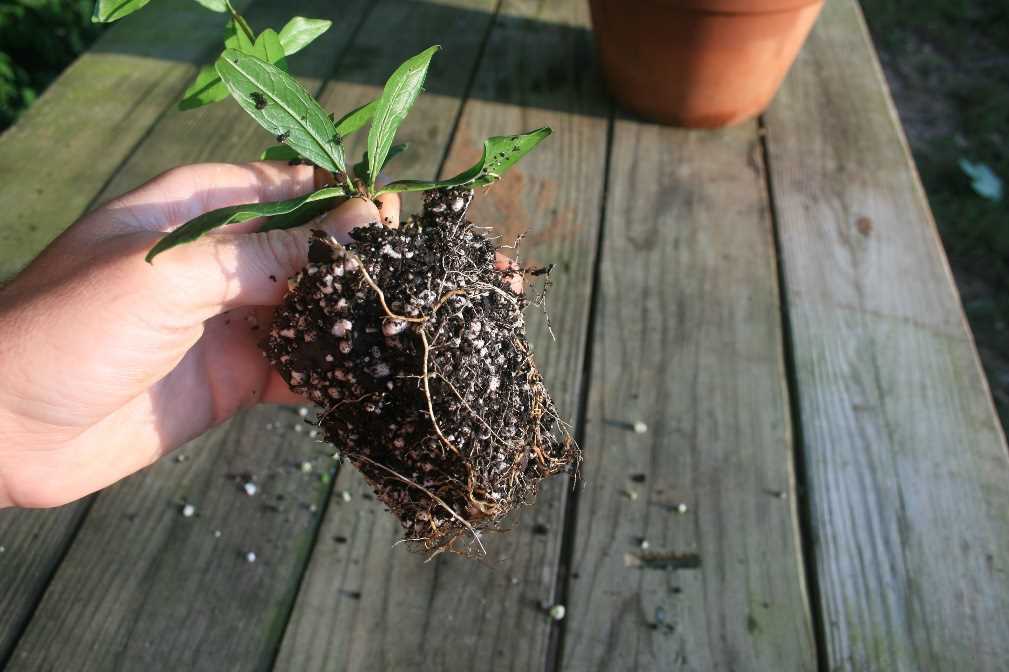
While it is important to avoid overwatering the cuttings, it is equally important to ensure they do not dry out. Regularly check the moisture levels in the rooting medium and mist the cuttings if necessary. Keeping the humidity levels in the rooting environment slightly elevated can also help promote successful rooting.
5. Provide bottom heat
Applying bottom heat can help expedite the rooting process even after a hard frost. Using a heating pad or a propagation mat underneath the rooting container can provide warmth to the cuttings, encouraging root growth. However, it is important to monitor the temperature to prevent overheating and damaging the cuttings.
6. Monitor and adjust lighting conditions
During winter, natural light levels may be low, which can affect the rooting process. Supplemental lighting with fluorescent or grow lights can help provide the necessary light intensity for the cuttings. Adjust the distance between the light source and the cuttings to ensure optimal lighting conditions without causing heat stress.
7. Patience and monitoring
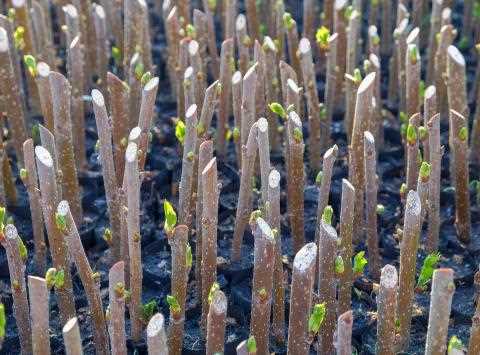
Rooting cuttings after a hard frost may take longer than under ideal conditions. It is important to be patient and monitor the progress of the cuttings regularly. Check for signs of root growth, such as new shoots or resistance when gently tugging on the cutting. Be prepared to wait several weeks or even months for successful rooting to occur.
By following these rooting techniques after a hard frost, you can increase the chances of successful propagation and create new plants from winter cuttings of deciduous plants.
Caring for Rooted Cuttings
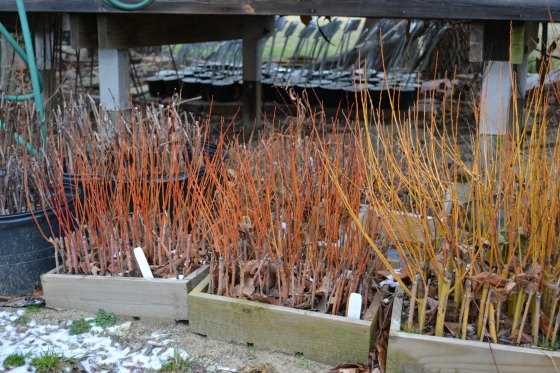
Once your cuttings have successfully rooted, it’s important to provide them with proper care to ensure their continued growth and development. Here are some tips to help you care for your rooted cuttings:
1. Transplanting
After rooting, it is important to transplant the cuttings into individual pots or a larger container. Use a well-draining potting mix that is suitable for the specific plant species. Gently remove the cuttings from the rooting medium, being careful not to damage the fragile roots, and place them in their new container.
2. Watering
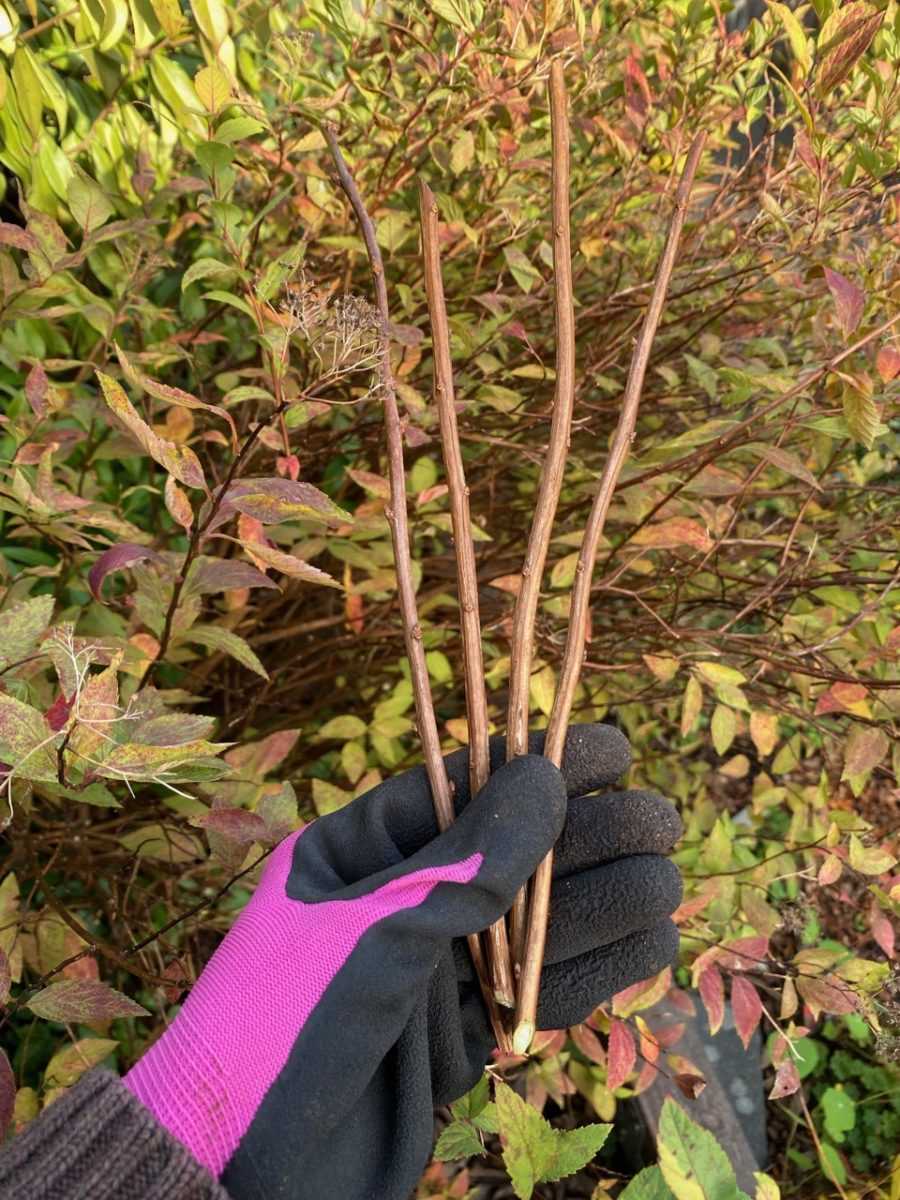
Proper watering is crucial for the survival of rooted cuttings. Keep the potting mix evenly moist, but avoid overwatering, as this can lead to root rot. Water the plants thoroughly, allowing excess water to drain from the bottom of the container.
3. Light and Temperature
Provide your rooted cuttings with appropriate light and temperature conditions. Most plants require bright, indirect light for optimal growth. Place them in a location where they will receive adequate light without being exposed to direct sunlight, which can scorch the delicate leaves.
Temperature is also important. Most rooted cuttings prefer temperatures between 60°F (15°C) and 75°F (24°C). Avoid exposing them to extreme temperatures, as this can stress the plants and hinder their growth.
4. Fertilizing
Once your cuttings are well-established in their new pots, you can begin applying a diluted liquid fertilizer. Use a balanced fertilizer with equal ratios of nitrogen, phosphorus, and potassium. Follow the manufacturer’s instructions for application rates and frequency.
Slow-release fertilizers can also be used, as they provide a steady supply of nutrients over a longer period of time. Apply the recommended amount to the potting mix, taking care not to over-fertilize, as this can damage the delicate roots.
5. Protection
Protecting your rooted cuttings from pests, diseases, and harsh weather conditions is essential for their well-being. Keep an eye out for common pests, such as aphids or spider mites, and treat them promptly with the appropriate insecticides or pesticides.
During extreme temperature fluctuations, such as frost or heatwaves, it’s important to provide additional protection. Move the plants to a sheltered location or cover them with a frost cloth or shade cloth to protect them from excessive cold or heat.
By following these care guidelines, you can enjoy the success of your rooted cuttings and watch them grow into healthy, mature plants.
Question-answer:
Can I take winter cuttings of deciduous plants after a hard frost?
Yes, you can take winter cuttings of deciduous plants after a hard frost. In fact, some plants actually root better after a hard frost because the cold temperatures stimulate root growth.
What is the best time to take winter cuttings of deciduous plants?
The best time to take winter cuttings of deciduous plants is in late winter or early spring, before the buds start to swell. This is when the plants are still dormant and the wood is hardened off.
What types of deciduous plants can be propagated from winter cuttings?
Many types of deciduous plants can be propagated from winter cuttings, including roses, hydrangeas, lavender, and many fruit trees and shrubs. It’s important to research each specific plant to determine the best time and method for taking cuttings.
What is the process for taking winter cuttings of deciduous plants?
The process for taking winter cuttings of deciduous plants involves selecting healthy, disease-free stems, making clean cuts just below a node or bud, removing any leaves from the lower portion of the cutting, and then dipping the cut end in rooting hormone before planting in a well-draining rooting medium. The cuttings should be placed in a warm, humid environment until roots develop.
Can I use a heating mat to encourage root growth in my winter cuttings of deciduous plants?
Yes, you can use a heating mat to encourage root growth in your winter cuttings of deciduous plants. The warm soil temperature provided by the heating mat can help stimulate root development and increase the chances of successful propagation.
How long does it take for winter cuttings of deciduous plants to root?
The time it takes for winter cuttings of deciduous plants to root can vary depending on the specific plant and environmental conditions. In general, it can take anywhere from a few weeks to several months for roots to develop. It’s important to be patient and provide the proper care during this rooting period.
What should I do if my winter cuttings of deciduous plants are not rooting?
If your winter cuttings of deciduous plants are not rooting, there are a few things you can try. You can check the temperature and humidity levels to make sure they are within the optimal range for rooting. You can also try using a different rooting medium or adjusting the amount of light the cuttings are receiving. If all else fails, you may need to take new cuttings and try again.







